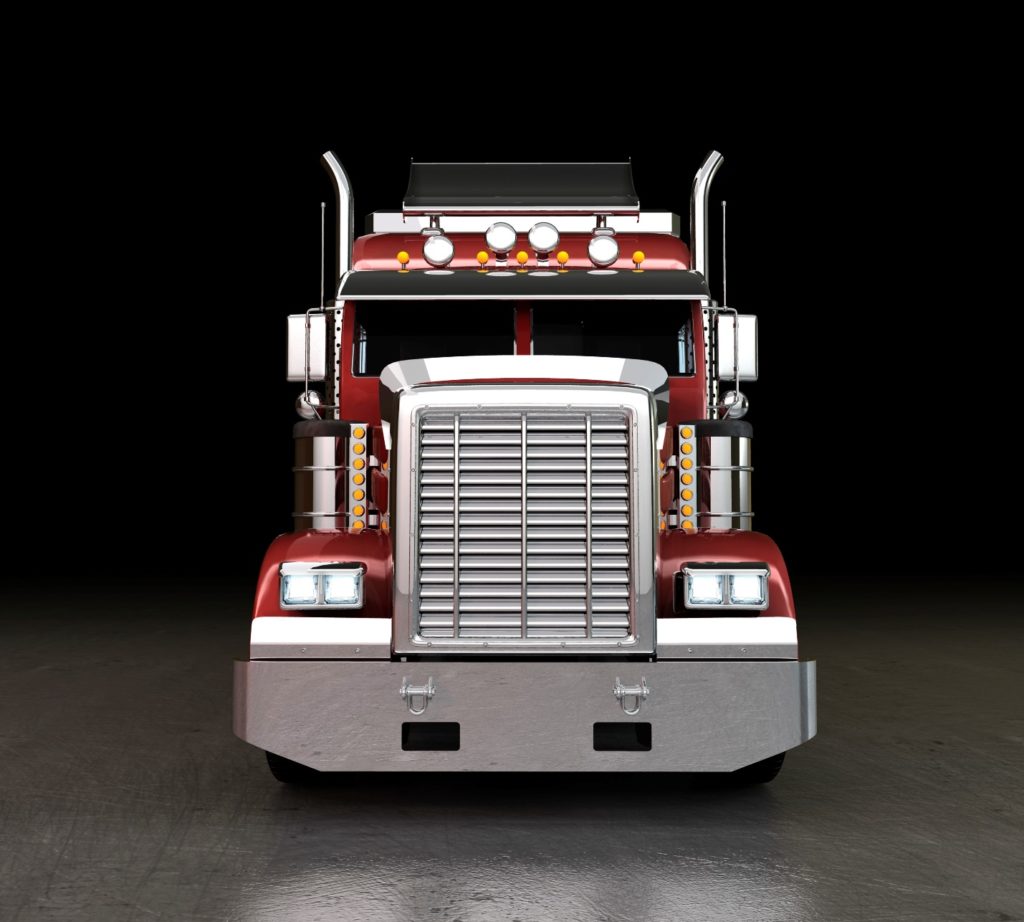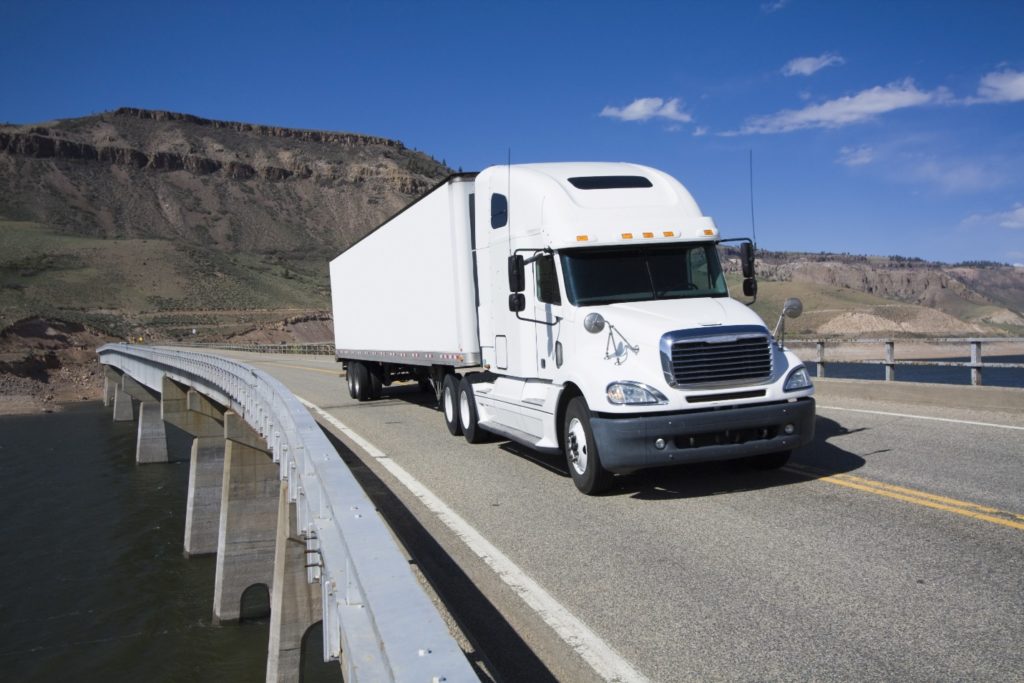Weighing thousands of pounds, semi-trucks are some of the most fascinating—and intimidating—vehicles on the road. With thousands deployed daily across the country with such a massive impact on our freeways, big rigs are also ripe for myths, assumptions, and misconceptions. Here, we take a look at five big rig myths and whether they hold water (or are simply all wet).
- When a big rig tire explodes, it can be deadly. (TRUE)
On an episode of “Big Rig Myths,” the team of the Discovery Channel series “Mythbusters” took on the question of whether an exploding semi-truck tire can be fatal. As the experts soon discovered, it can.
The “Mythbusters” team built a custom setup in which the tires of an overturned pickup truck were used to manually control the spin of the semi-truck tires set on top of them. With their testing dummy strapped into an adjacent vehicle, they tried various methods to make the tire explode—to no avail.
Ultimately, the team had to control the direction of the tire rubber and had great success decapitating a dummy with a head made of ballistics gel. It was concluded that the force of rubber from an exploding tire could be fatal and was considered “confirmed.”
Although there is a very specific set of circumstances that need to align for you to be hit by the rubber from an exploding tire, this information is still worth knowing. If you’re ever near a semi-truck that appears to have a compromised tire, it’s best to hang back, just in case.
- Experienced and knowledgeable truck drivers are less likely than other drivers to make errors. (FALSE)
While it might be easy to assume that truckers are more educated and experienced in using proper driving skills (and truck drivers themselves would probably argue so), that’s not necessarily the case. In fact, when a trucker spends most of his or her life on the road, it’s much easier to become “bored” with driving and get somewhat complacent about it.
Naturally, all U.S. truck drivers are expected to meet certain standards regarding driving ability and maintain a valid license for the class of vehicle they drive. Unfortunately, truckers don’t always exhibit ideal driving behaviors while on the job. As imperfect humans, truckers are still capable of making mistakes or driving in an overconfident manner that can lead to a serious accident.
- Drafting a semi-truck can save on gas. (TRUE)
Another idea that found itself on the big rig episode of “Mythbusters” is the myth that drafting a semi-truck in a passenger vehicle can reduce fuel usage. Long used by NASCAR greats and other professional drivers, drafting—or “slipstreaming”—takes advantage of an area of low pressure behind a vehicle, reducing the drag on the following vehicle and, thereby, requiring less energy.
In the “Mythbusters” test, the team utilized a Freightliner Cascadia semi-truck, known in the industry for its particularly aerodynamic properties. They then hooked a computer to the fuel injection system of a passenger vehicle to measure fuel usage and sent a team member outfitted in safety gear to draft closely behind the truck. After the test was complete, the experts gathered to analyze the numbers.
The results of the test were quite impressive: At a distance of 100 feet behind the big rig, there was an 11% improvement in fuel economy; at a distance of 50 feet there was a 20% improvement in fuel economy; at 20 feet there was a 27% improvement in fuel economy; and at a distance of 10 feet, there was a 39% improvement in fuel economy.1 Needless to say, this myth was easily given a “confirmed” stamp by the “Mythbusters” team.
Although it may be tempting to try to save gas the next time you’re behind a big rig by drafting within 100 feet of the truck, it’s incredibly unsafe and is absolutely not recommended. As the “Mythbusters” gang re-iterated over and over, approximately ¾ of semi accidents are caused by a passenger vehicle driving in the blind spot of the truck. If the truck driver can’t see that you’re there, you’re already at risk of an accident.
- Accidents caused by trucker fatigue are unusual. (FALSE)
It’s no breaking news that truck drivers are at the mercy of their bodies’ ability to focus during long hours on the road. After a 14-hour caffeine-fueled drive, even the most seasoned trucker can find herself struggling to stay properly awake and alert. For this reason, accidents caused by trucker fatigue are anything but unusual. In fact, driver fatigue is estimated to account for as many as 13% of large truck crashes.2
According to the U.S. Department of Transportation, research has shown that the long hours of driving and lack of rest periods often leave truckers suffering from chronic fatigue.3 In this fatigued state, truck drivers’ reaction times are significantly slower, and they have a more difficult time assessing their surroundings and determining whether a situation is safe. Because dangerous driving situations can occur in fractions of a second, chronic fatigue and reduced reaction time are especially dangerous for truckers.
Like non-truckers, truckers also tend to be unable to recognize their own fatigue, the research says, which means that they likely have no idea they’re not driving as well as they were earlier. Even seemingly obvious absent-minded behaviors can go totally unnoticed; drifting between lanes of traffic, for example, is a dangerous driving behavior that is commonly overlooked by truck drivers when they are fatigued.
- Auto insurance is usually sufficient to compensate victims of truck accidents. (FALSE)
Most of us assume that so long as all drivers involved have the required auto insurance, we’ll be protected in the case of a serious accident. Unfortunately, the amount of insurance money an individual receives depends greatly on who was at fault, what the given insurance company pays, and whether or not the situation is even covered by the policy.
Even when there is a sizeable insurance payout, big rig accident victims often still find themselves without a vehicle and/or struggling to pay for the damage and medical bills. While purchasing minimal auto insurance coverage is typically sufficient to cover most small accidents, catastrophic crashes—like those possible when a big rig weighing thousands of pounds is involved—are much more likely to exceed the limits of minimal coverage. In these cases, the help of a big rig accident attorney may be necessary.
Injured in a Semi-Truck Crash? Get Help from an Experienced Big Rig Accident Lawyer!
If you find yourself the victim of a semi-truck accident that was not your fault, you should contact an experienced truck crash attorney immediately after all pressing emergency medical issues are addressed and you have the opportunity to place a call. Your lawyer will work with you to discuss the details of your case, determine what you are entitled to receive, and, eventually, file a suit to fight for those damages.
At Schechter, McElwee, Shaffer & Harris, L.L.P., we help victims of auto accidents seek the compensation they deserve while giving them the time and space necessary to recover from the trauma. As an experienced truck injury lawyer, our knowledgeable legal professionals will fight for your rights and help you make up for what was lost.
To learn more about what we do or schedule a free consultation with a lawyer, call us today at 1-713-364-0723.
Sources

 Over 300 Google 5 Star Reviews
Over 300 Google 5 Star Reviews










